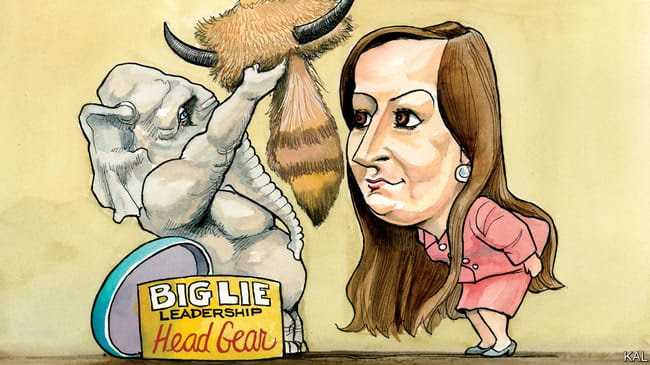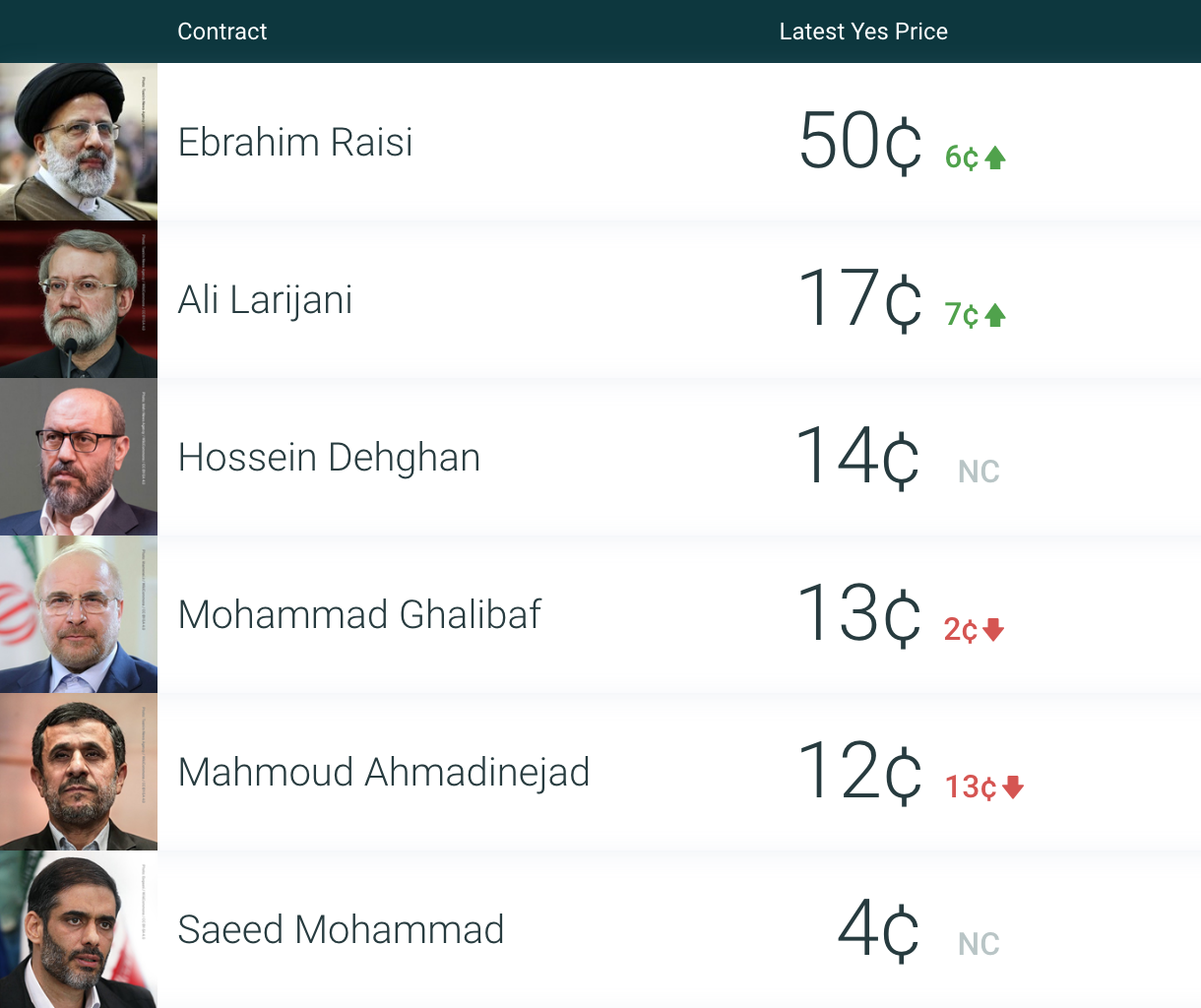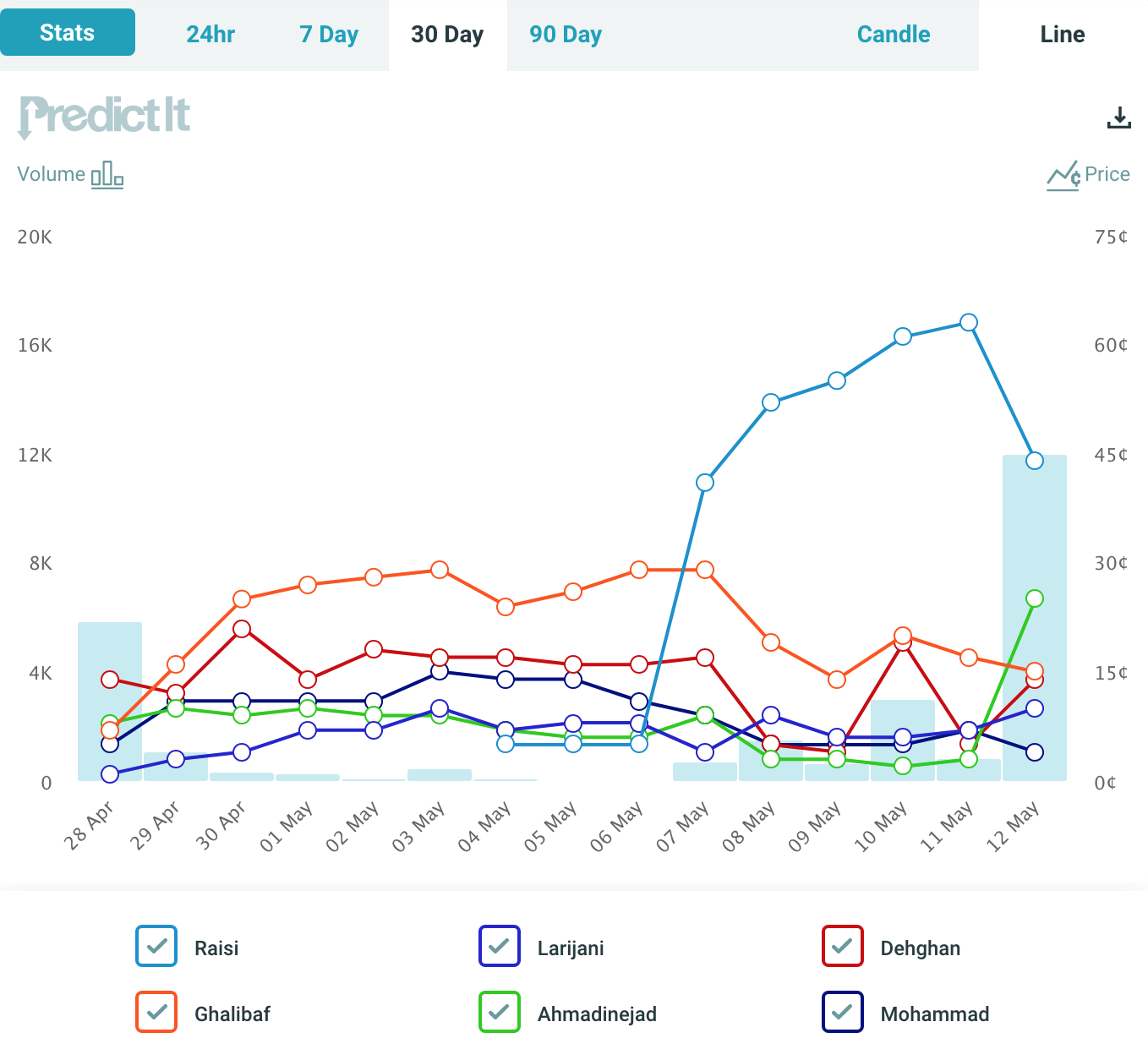It has been quite a week as in the United States, the grip by former President Donald Trump was solidified over the Republican Party, the Israel/Palestine war raged on, Iran's Presidential Candidates registered as profound challenges including drought, economic devastation, and political repression continued, China's Mars Probe landed, COVID raged in India and as the CDC relaxed Mask Guidelines here in the United States.We hereby present an Outsider Grid of the week that was in our world courtesy the Bulwark, The Economist, The Financial Times, The Washington Times & Other Partners we consult daily:
WILLIAM KRISTOL: New polling suggests it’s growing likely Republicans will retake the House in 2022.
 |
Republicans seize on discouraging data to warn president is endangering economy with excessive stimulus MAY 16, 2021 by James Politi in Washington
 |
US president’s plan is the next catalyst for growth in the building materials sector MAY 14, 2021
 ANDREA NOBLE | The FCC has launched a program that provides $50 subsidies to help households pay internet bills and also approved rules for a $7 billion fund for libraries and schools. | BRENT WOODIE | Along with businesses, state and local governments are offering a growing variety of perks to get residents hesitant about the shots to roll up their sleeves. | KATE ELIZABETH QUERAM | The 17-year cicadas are set to emerge from their underground lairs in multiple areas, with some cities and states finding creative ways to celebrate these large, noisy, clumsy insects. |
Officials hand out free MetroCards and lottery tickets to entice Americans who have not had jabs MAY 14, 2021 by Nikou Asgari in New York
Valneva, a French company, is producing a COVID-19 vaccine that it hopes will offer much better protection against most variants of the coronavirus. Read the full story here. |
|
|
|
Brian Klaas, an Associate Professor at
University College London, shared some perspective on the week that was in
America in the aftermath of Liz Cheney being ousted as the Number 3 Republican
in the US House Leadership:
1. By
replacing Cheney with Stefanik, the GOP has centered itself around a cult of
personality, in which sacrificing principles and truth on the altar of Trumpism
is required. It's a dynamic I've seen firsthand in dictatorships and
authoritarian regimes.
2. Cheney
was replaced for two reasons: 1) She broke with Trump during impeachment; and
2) She challenged the "Big Lie" about the 2020 election. The 2nd
reason is far more sinister. She was purged because she wouldn't repeat the
myths that now define Trump's cult of personality.
3. At the
extreme end, cults of personality are absurd. (I've had to stand up to watch a
short biopic glorifying the King of Thailand before watching the Hobbit). But I
worry that many Americans are also underestimating how dangerous and
destructive they are to democracy.
4. Cults of
personality function as loyalty tests. By forcing people to display devotion by
repeating lies about a leader, they effectively separate the zealots from the
dissenters. But it means that principles and debate become secondary to
dogmatic repetition of official myths.
5. Worse,
they create a ratcheting effect for extremism. Stefanik correctly figured out
that she could break out as a GOP star by debasing herself with highly visible
displays of fealty to Trump. How do others now break out relative to Stefanik?
Be more extreme than she is.
6. As @anneapplebaum explains,
Poland offers a warning. Repeating a false conspiracy theory became a mechanism
to show bona fides as a devoted member of the authoritarian "Law &
Justice" party. Repeat the official myths, and you're in. That helped
accelerate democratic breakdown.
7. It is
quite literally the case that advancement in the Republican Party now comes
with two tests: 1) Will you unequivocally praise Trump?; 2) Will you lie and
say that he won the 2020 election? This dynamic is a watered down version of
cults of personality in dictatorships.
8. Whatever
you think about Cheney, it's a dangerous development for American democracy
that a senior Republican leader was purged largely *because* she told the truth
about the winner of the 2020 election. Voters should punish a party that
punishes leaders for telling the truth.
"From the Desk of Donald J. Trump" is exactly what it sounds like — a place where journalists, supporters, and opponents can receive musings from the 45th president following his banishment from social media platforms after the Capitol riot. Read the full story here. The crowd of Wyoming Republicans vying to oust Rep. Liz Cheney is expected to clear out once former President Donald Trump chooses a favorite, a development that could sink the embattled incumbent. Read the full story here. A country obsessed with youth must grapple with its declining birth rates MAY 16, 2021 by Rana Foroohar
|
 |
Decision to sacrifice €115,000 annual income comes amid country’s economic crisis MAY 13, 2021 by Miles Johnson in Rome
Third of Arab world has relations with the Jewish nation but violence shows ties have done nothing to resolve conflict MAY 16, 2021 by Heba Saleh in Cairo and Simeon Kerr in Dubai
Trapped in the narrow coastal strip, its borders sealed, 2m Palestinians have nowhere to flee MAY 16, 2021 by Heba Saleh in Cairo and Mehul Srivastava in Tel Aviv
| The NGOs are demanding that platforms reinstate Palestine-related content and accounts. |
|
|
|
|
Thursday’s One Thing — Iran's Next President and a Certain Nuclear Deal |
|
| | he short presidential election season in Iran has kicked off as several candidates registered to become part of what promises to be a crowded field. On Tuesday, the registration of candidates for Iran's June 18 presidential election officially began in the country's Interior Ministry headquarters with 57 hopefuls showing up on the very first day of a five day period, according to Iranian media. Those registering are hoping to succeed the outgoing President Hassan Rouhani, who will step down after serving the maximum two consecutive terms allowed. Traditionally, candidates standing valid chances of victory hold off their appearance until only a few hours before the deadline. Once the five-day registration period ends on Saturday, the candidate names are then handed to the conservative-dominated Guardian Council for vetting. More than 20 public figures have officially announced their intention to run, with the final list of those qualified due on May 26-27, the interior ministry said. Within Iran, candidates exist on a political spectrum that broadly includes hardliners who want to expand Iran's nuclear program and confront the world, moderates who hold onto the status quo and reformists who want to change the theocracy from within. |
| | | Rouhani and the 12-Strong Guardian Council Internal clashes have intensified this election cycle as the 12-strong Guardian Council and the presidency have faced off over candidacy criteria. Earlier this week, the council unilaterally proclaimed a series of conditions with the stated goal of weeding out unqualified candidates. Those included an age limit of 40 to 75 years, and a requirement to have at least four years of senior executive leadership experience. On Monday, Rouhani ordered his interior ministry to ignore the proclamation and proceed as before. The outgoing president insisted council had no legal authority to impose new, more restrictive criteria, saying it went beyond provisions in the Iranian constitution. The new criteria have however been backed by 200 Iranian parliamentarians. The immediate impact of the criteria change could see Mohammad Javad Azari Jahromi, the 39-year-old minister of communications and information technology, blocked from standing for a four-year term as president. He turns 40 in September. It could also jeopardize several reformists like former deputy interior minister Mostafa Tajzadeh, former senior diplomat Sadeq Kharrazi, and former legislators Mahmoud Sadeqi and Mostafa Kavakebian. The reformists have for months been discussing whether it is worth putting up a candidate, with some backing a boycott to leave the conservatives in visible control of the institutions on the basis that reformists are currently in office but in practice wield little power. |
| | | Iran Nuclear Deal May Overshadow the Campaign At stake in the upcoming election is the economy, which has been hit hard by US sanctions, reimposed after the Iran nuclear deal — formally known as the Joint Comprehensive Plan of Action (JCPOA) — was abandoned in 2018 by former US President Donald Trump. The revival of the accord is currently being indirectly negotiated by Iran and the US in the Austrian capital of Vienna. Iran has refused to hold direct meetings with the US on how to resume compliance with the deal. Officials have said they hope to reach a deal by May 21, when an agreement between Tehran and the United Nations nuclear watchdog on continued monitoring of some Iranian nuclear activities is due to expire. The fate of the deal is widely expected to overshadow the presidential campaign. Rouhani is hoping to get it back on track and have the sanctions lifted before he departs form office. Names to Keep an Eye On The overwhelming majority of candidates are expected to be disqualified, as has been the case in previous votes. In 2017, a total of 1,636 individuals put their name to run for president, a large increase over the 686 in 2013. No woman has been selected to run for president by the council since the 1979 Islamic Revolution. So far, two prominent military candidates have signed up. Hossein Dehghan, 64, currently serves as defense adviser to Supreme Leader Ali Hosseini Khamenei and was defense minister during the first term of Rouhani. The other is Saeed Mohammad, 53, who said he is running as an independent and wants to unite the country. The brigadier general was the commander of the powerful Khatam al-Anbiya Construction Headquarters until last month, when he said he resigned to run for president but some members of the Islamic Revolutionary Guard Corps (IRGC) said he was fired due to “violations.” Prominent reformist Tajzadeh announced on Tuesday via a tweet that he will register on Friday morning. He is likely to struggle to clear the Guardian Council since he was imprisoned 2009 until 2016 for protesting over claims the 2008 presidential election was stolen. |
| | | On Wednesday, the biggest name to register was former President Mahmoud Ahmadinejad, who is 64. His election registration was accompanied by the same populist and crowd-pleasing gestures of his presidency. Also registering Wednesday was Rostam Ghasemi, who served as oil minister under Ahmadinejad and as a general in Iran's paramilitary Revolutionary Guard. Three big conservatives – the judiciary chief, Ebrahim Raisi, the former speaker of the Majlis (the parliament) and the politician charged with negotiating the 25-year strategic partnership with China, Ali Larijani, and the pro-IRGC Saeed Jalili have yet to declare. If Raisi does stand – and it is tipped he will announce his candidacy soon – he is likely to clear most other conservatives from the field, such as Jalili, as they try to get on board with his campaign. Raisi has emerged as one of Iran’s most powerful figures and a contender to succeed Khamenei as supreme leader. He lost to Rouhani in the 2017 election. Wisdom of the Crowd The current political situation has placed Israeli Prime Minister Benjamin Netanyahu as the odds on favorite to be the first of a list of 10 Asian/Pacific leaders to leave office first. Israel’s longest serving prime minister sees his contract open trading at 57¢ today with Rouhani at 39¢. The pair have trader top billing in this market since mid-April. Prior to Netanyahu’s troubles, Rouhani’s 90-day market high was 64¢. Switching our attentions to who will prevail in the 2021 Iranian presidential election, and we see Raisi holding the top spot at 44¢. Former president Ahmadinejad is second at 25¢ — his candidacy receiving a 22¢ bump with his registration. Mohammad Ghalibaf, current speaker of parliament and close ally of Khamenei, entered today’s trading in third at 15¢. He is followed by Dehghan at 14¢ and Raisi’s fellow conservative, Larijani, at 10¢. Yesterday’s trading, the largest since launch, put a dent in Raisi’s odds as they fell nearly 20¢ from Tuesday’s market high of 63¢. How this market plays out from here will have much to do with who runs and who is approved to continue by the Guardian Council. Make sure to stay tuned in! |
| |
|
|































